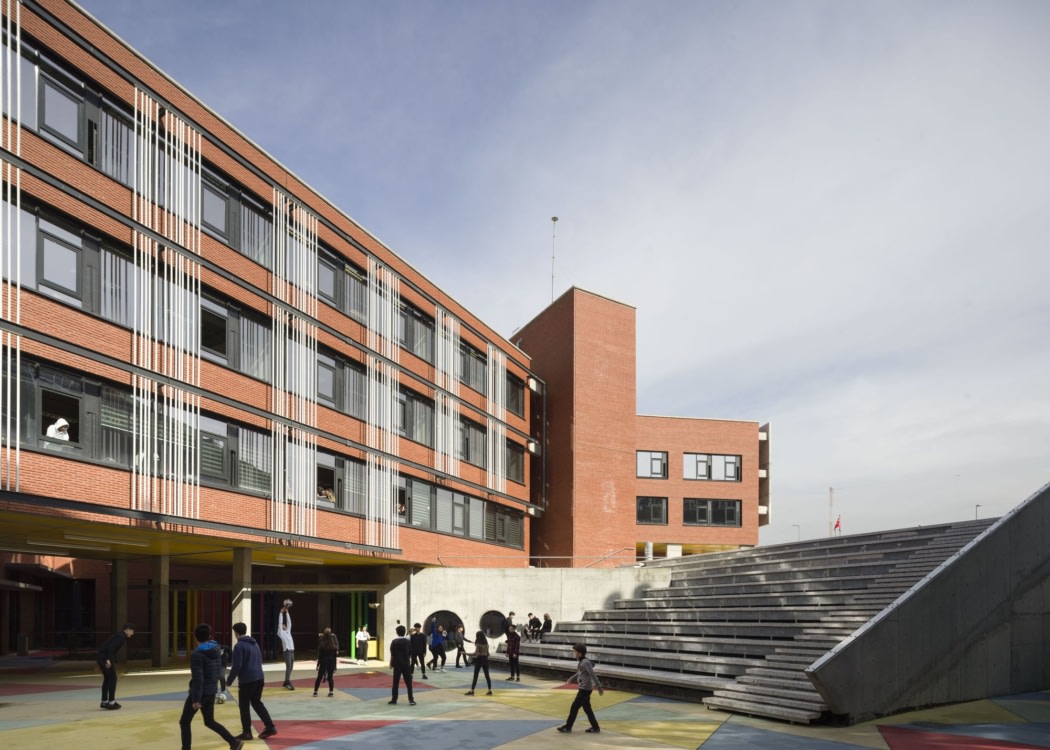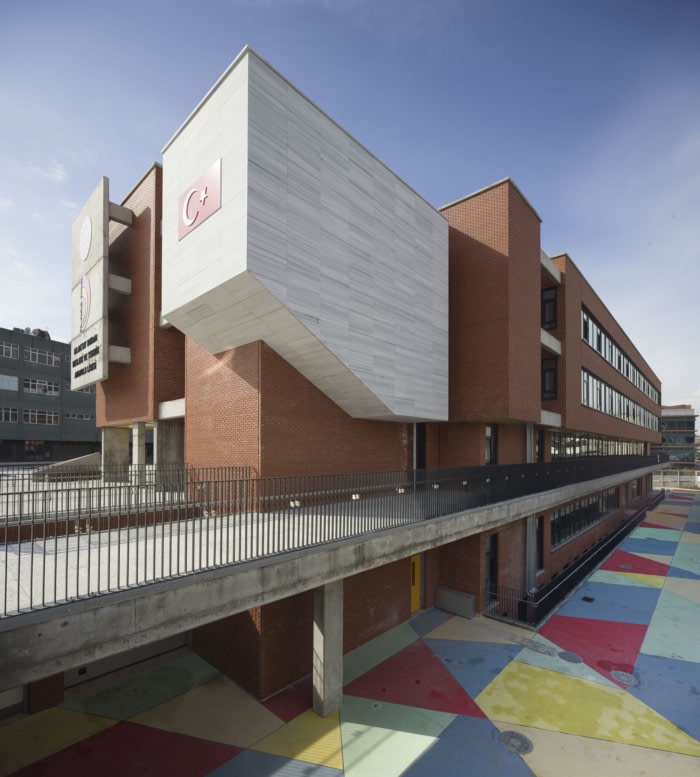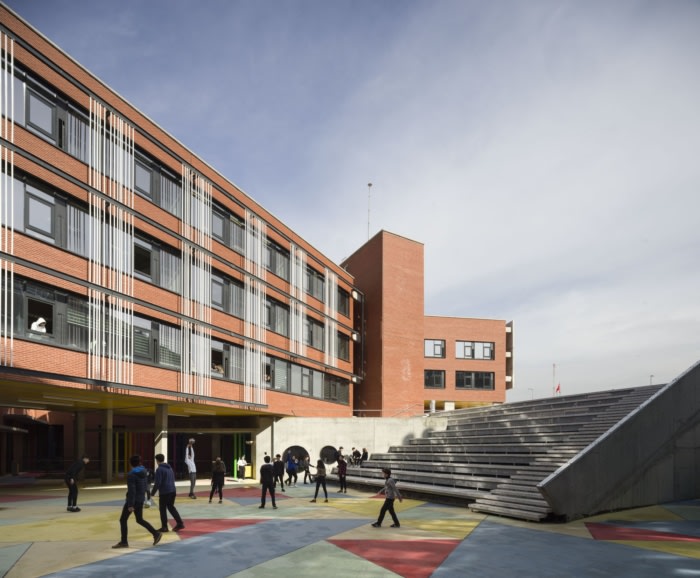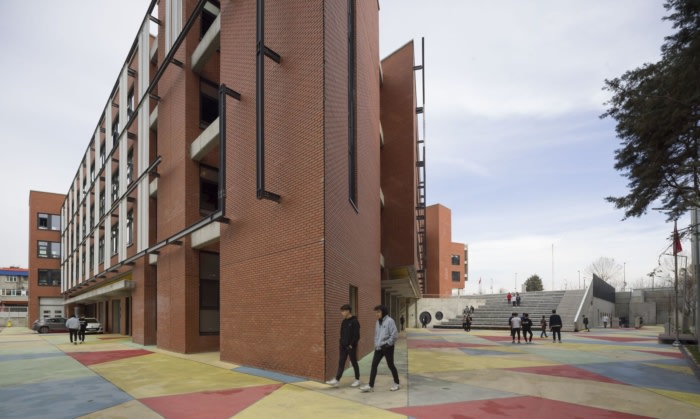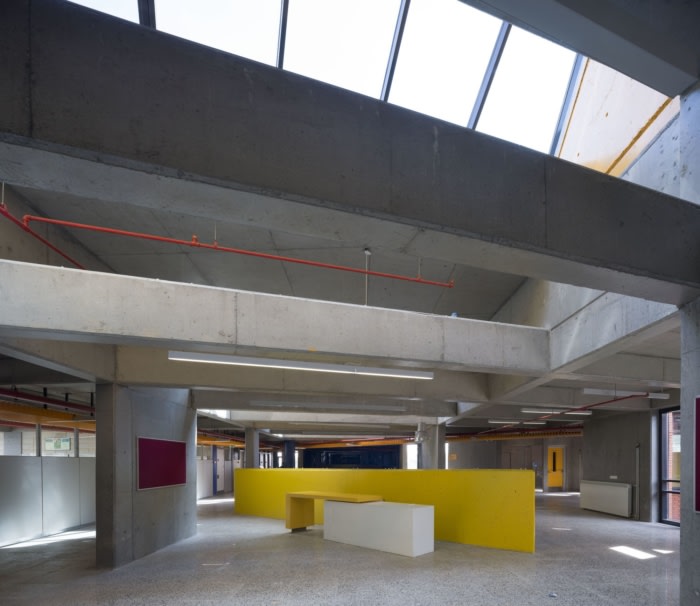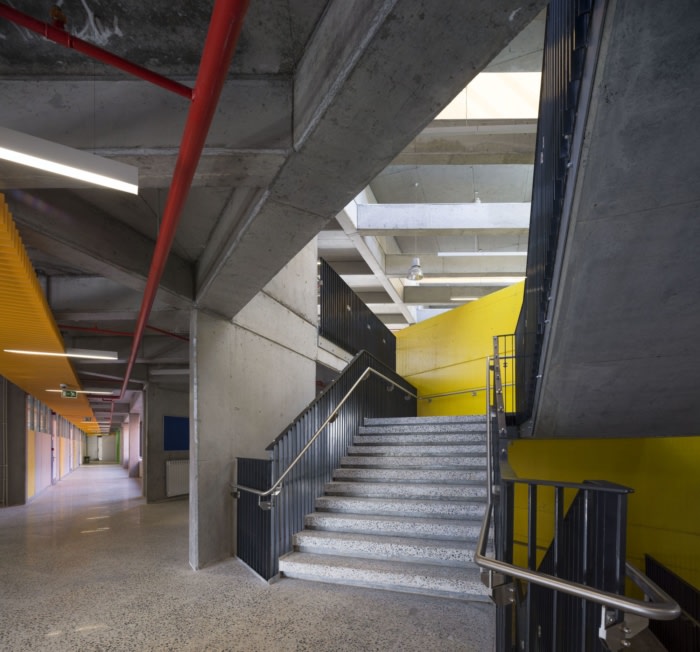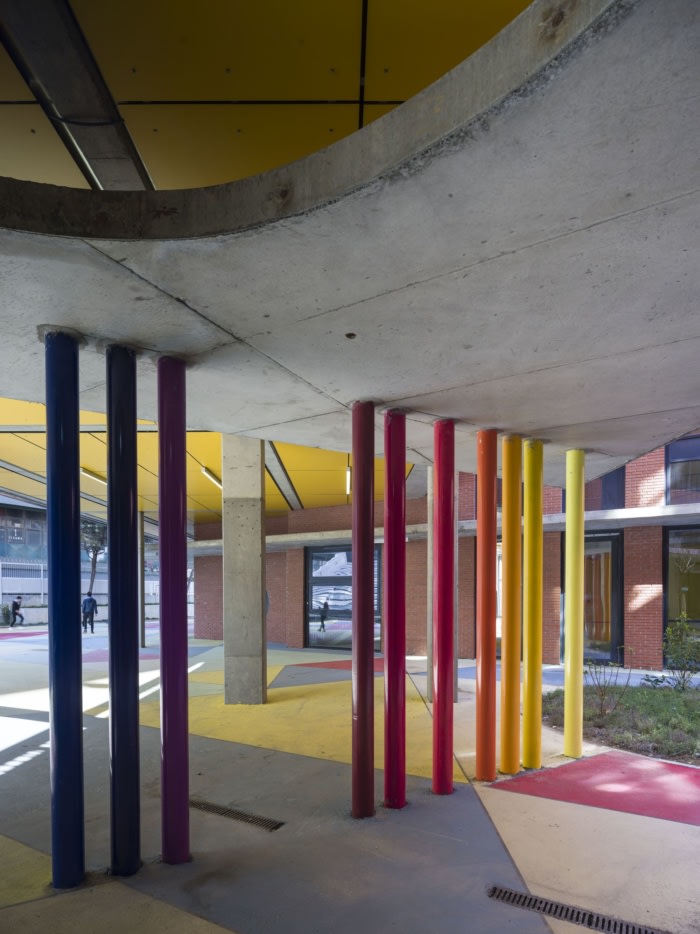Dr. Oktay Duran Vocational and Technical Anatolian High School
Uygur Architects increased the functionality in the design of Dr. Oktay Duran Vocational and Technical Anatolian High School in Istanbul, Turkey.
Dr. Oktal Duran Vocational and Technical Anatolian High School is just one of the package project named as “45 Public Buildings in Istanbul”. Schools, which are decided to be demolished and reconstructed in Istanbul within the scope of ISMEP (Istanbul’s Seismic Risk Removal Project), are designed on the same site by increasing their capacities.
Dr. Oktay Duran Vocational and Technical Anatolian High School has a particular prominence by being a printing technical high school that also prepares the printed documents for the schools of Istanbul. 1-storey level difference from one end to the other of the corner parcel where the school building is located, played a major role in determining the building tectonics. With its relatively large volume, the sports hall is interconnected to the interior composition on the lower ground level by having a social recreational potential. While the roof of the hall is designed as a square merging into the school garden, with an amphitheater it is connected to the triangular courtyard surrounded by the triangular mass of the school by functionalizing the elevation difference of the land. Around the triangular courtyard indoor social common spaces are arranged by widening and narrowing flow of the circulation spaces. Accepting the entity of school as “the first public space”, the design principle defends the idea that common social spaces generate the educational framework of school designs. As an education-supporting element of the school, all the materials used in the construction are used raw, therefore exhibited in a simple format. Consideration has been given to the quantity and the quality of the access of natural light into the interior spaces, and accordingly the interior configuration has been examined in order for vertical and horizontal circulation areas to benefit from light. The eloquent perspectives that emerged as a result of the triangular form added dynamism to the building and enhanced the transparency of circulation within the building.
The project consists of the rehabilitation of 45 public buildings in various districts of Istanbul, Turkey within the Istanbul Seismic Master Plan. Except few buildings the project is mainly focuses on schools in İstanbul. The works related to the rehabilitation program includes demolition of the existing buildings, data collection, architectural and engineering design studies, preparation of construction tender documents and provision of supervision services during the construction works. Uygur Architects carried out the architectural design, engineering design coordination, preparation of construction tender documents and provision of architectural supervision during the construction works.
Architects considered this project as an important opportunity for modernization of the educational spaces. According to the architects’ approach, each school should have its own identity instead of applying a typical project, which is the most accepted by the Ministry of Education. Thus, even though the new schools have the same concept, each of them is designed separately within its own context. Besides, as a significant design principle, contemporary education understanding is adopted by composing various indoor and outdoor common spaces. Considering that fact that schools are the first social public spaces children could experience, predominantly the common spaces generate the educational framework of school designs. Each project was designed with the awareness that educational units not only are for students, but also improve the learning desire, environmental conscience and spatial taste of the residents in city life. In order to design socially sustainable and energy-saving buildings, the structural components are designed and constructed without any paint or coating.
Architect: Uygur Architects
Photography: Cemal Emden

